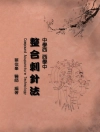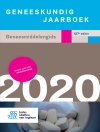Prosthetic Restoration and Rehabilitation of the Upper and Lower Extremity is a well-illustrated, state-of-the-art reference on the science and practice of post-amputation care, prosthetic restoration, and functional rehabilitation, designed to maximize patient independence and quality of life. Chapters are written by physiatrists, prosthetists, surgeons, and therapists at the University of Michigan, clinicians and teachers who work with amputees on a daily basis. Clinically oriented, it covers both lower and upper extremity restoration and rehabilitation and serves as a handy reference for busy practitioners to support sound clinical decision-making.
Beginning with basic anatomy, kinesiology, and a recap of surgical decisions principles and post-operative care for amputees, the book discusses biomechanics, clinical assessment, prosthetic options, how to write a complete and detailed prescription for the prosthesis, restoration and management of specific problems by region, and rehabilitation programs and strategies. Common medical issues such as phantom limb sensation and pain, skin problems, and sexual and psychological considerations are discussed as well. In-depth coverage of prosthetic restoration is provided for special populations such as infants, children, the elderly, athletes multi-extremity amputees, and those who have lost limbs to cancer. Chapters are written in expanded outline format for ease of use and feature numerous full-color diagrams, photos, and other illustrations. This text will guide physicians, trainees, and other members of the care team through the fundamentals of restoring function to individuals who have lost limbs or body parts.
Key Features:
- Provides a state-of-the-art, accessible, clinical approach to post-amputation care, prosthetic restoration, and functional rehabilitation
- Covers both upper and lower extremities
- Addresses prostheses for special populations and sports and recreation
- Includes boxed clinical pearls at the start of each chapter, illustrated quick reference tables, and full-color photos throughout
- Supports clinical decision making and addresses practical questions and problems
- Advises on new requirements for Medicare and Medicaid patients, and includes patient education materials and sample prescription forms that can be customized for use in any clinic
- Outlines important information for returning to the community after amputation
Cuprins
INTRODUCTION; LOWER EXTREMITY: 1. Lower Extremity Anatomy, Kinesiology and Gait; AMPUTATION SURGERY: 2. Principles of Amputation Surgery; 3. Post-Operative Rehabilitation and Care; PROSTHESIS: 4. Anatomy of a Lower Extremity Prosthesis; 5. Purpose, Designs and Types of Lower Extremity Prostheses; 6. Materials and Mechanics of a Lower Extremity Prosthesis; 7. Suspension Systems; 8. Prosthetic Components; PROSTHETIC RESTORATION : 9. Phases and Process of Prosthetic Restoration; 10. Pre-Prosthetic Evaluation and Training; 11. Preparatory Prosthesis Stage; 12. Definitive Prosthesis Stage; 13. Long Term Prosthesis Use; 14. Lower Extremity Prosthesis Selection, Management and Prescription; 15. Prosthetic Management of Partial Foot or Toe Loss; 16. Prosthetic Management of Ankle disarticulation; 17. Prosthetic Management of the Trans Tibial Amputation and Knee Disarticulation; 18. Prosthetic Management of the Trans Femoral Amputation; 19. Prosthetic Management Hip disarticulation, Hemi Pelvectomy, Hemicorpectomy; REHABILITATION : 20. Preparing the Residual Limb for Prosthetic Use; 21. Range of Motion, Strengthening and Desensitization; 22. Prosthetic Gait Training; 23. Abnormal Gait; UPPER EXTREMITY : 24. Upper Extremity Anatomy, Kinesiology and function; AMPUTATION SURGERY: 25. Principles of Amputation Surgery; 26. Post -Operative Rehabilitation and Care; UPPER EXTREMITY PROSTHESIS : 27. Anatomy of an Upper Extremity Prosthesis; 28. Purpose, Designs and Types of Upper Extremity Prostheses; 29. Materials and Mechanics of an Upper Extremity Prosthesis; 30. Suspension Systems; 31. Prosthetic Components; 32. Body-Powered v. Externally Powered Designs; PROSTHETIC RESTORATION : 33. Phases and Process of Prosthetic Restoration; 34. Pre Prosthetic Evaluation and Training; 35. Preparatory Prosthesis Stage; 36. Definitive Prosthesis Stage; 37. Long Term Prosthesis Use; 38. Upper Extremity Prosthesis Selection, Management and Prescription; 39. Prosthetic Management of Partial Hand Loss; 40. Prosthetic Management of Wrist disarticulation; 41. Prosthetic Management of Tran-radial amputation; 42. Prosthetic Management of the Elbow Disarticulation; 43. Prosthetic Management of Trans-Humeral Amputation; 44. Prosthetic Management of Shoulder Disarticulation; 45. Prosthetic Management of the Scapulo-Thoracic Amputation; 46. Prosthetic Management of the Bilateral Upper Extremity Amputee; 47. Management of the Patient with an Externally Powered Prosthesis; REHABILITATION : 48. Preparing the Residual Limb for Prosthetic Use; 49. Range of Motion, Strengthening and Desensitization; COMMON PROBLEMS IN AMPUTEE CARE AND PROSTHETIC MANAGEMENT : 50. Phantom Limb Sensation and Pain; 51. Residual Limb Pain; 52. Choke Syndrome; 53. Dermatological Problems; 54. Wounds; 55. Psychological Issues; PROSTHETIC RESTORATION FOR SPECIFIC POPULATIONS : 56. Infants and Children; 57. Athlete; 58. Elderly; 59. Prostheses for Sports and Recreation; FRONTIERS IN PROSTHETIC RESTORATION : 60. Overview of current research areas
Despre autor
Mary Catherine Spires, PT, MD, Professor, Department of Physical Medicine and Rehabilitation and Director, Residency Training Program, University of Michigan Medical Center, Ann Arbor, MI












